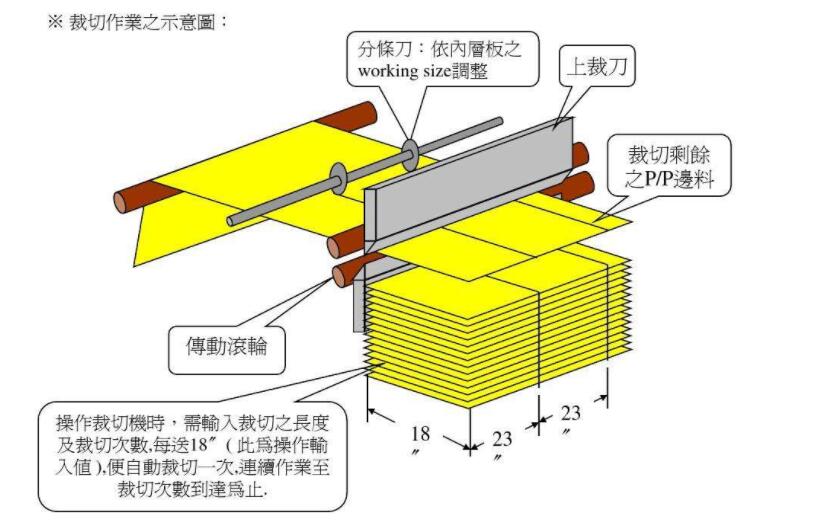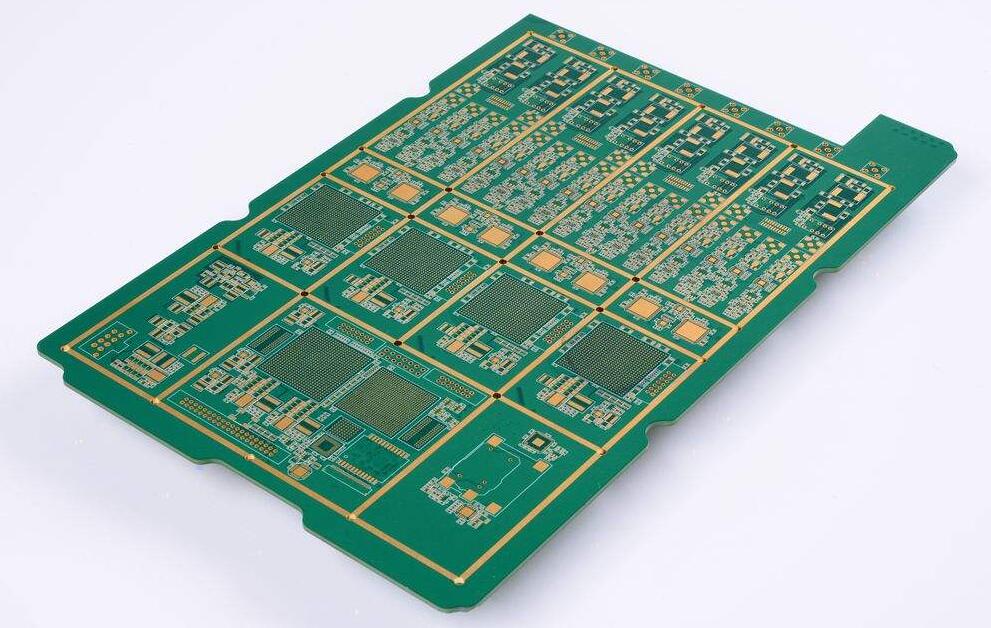With the rapid development of electronic technology, the development of PCB board technology has been promoted. PCB circuit boards are developed through one-sided, two-sided, and one-layer, and the proportion of PCB multilayer boards is increasing year by year. The performance of PCB multilayers is in the extreme development towards high * precision * dense * fine * big and small. Laminating is an important process in the manufacture of PCB multilayer PCBs. The control of lamination quality becomes more and more important in the manufacture of PCB multilayer PCBs. Therefore, to ensure the lamination quality of PCB multilayer PCBs, a good understanding of the lamination process of PCB multilayer PCBs is needed. For this reason, based on many years of lamination practice, the following summary is made on how to improve the lamination quality of PCB multilayer PCBs:
I. Design inner core PCBs that meet the lamination requirements.
Due to the gradual development of laminator technology, the process of hot pressing is in a closed system from the previous non-vacuum hot press to the present vacuum hot press, which can not be seen or touched. Therefore, it is necessary to make a reasonable design of the inner PCB before lamination, and provide some reference requirements here:
1. Choose the thickness of the core PCB according to the requirements of the total thickness of the PCB multilayer board. The thickness of the core PCB is the same, the deviation is small, and the direction of latitude and longitude of the cutting material is the same, especially for PCB multilayer PCBs with more than 6 layers. The latitude and longitude directions of each inner core PCB must be the same, that is, the longitude and longitude directions overlap, and the latitude and latitude directions overlap, so as to prevent unnecessary bending of the
2. There should be a certain distance between the shape dimension of the core PCB and the effective elements, that is, the distance from the effective elements to the edge of the PCB should leave as much space as possible without wasting material. Generally, the distance between four-layer PCBs is more than 10mm, the distance between six-layer PCBs is more than 15mm, the higher the number of layers, the larger the distance.
3. The design of positioning holes, in order to reduce the deviation between PCB multilayer layers and layers, it is necessary to pay attention to the design of positioning holes for PCB multilayer PCBs: 4-layer PCBs only need to design more than 3 positioning holes for drilling holes. In addition to designing positioning holes for drilling holes, more than 5 positioning rivet holes for overlapping layers and 5 positioning holes for tool PCBs for riveting are needed for PCB multi-layer PCBs with layers above 6. However, the positioning holes, rivet holes and tool holes are generally designed with a higher number of layers and a larger number of holes designed with the position as close as possible to the side. The main purpose is to reduce the alignment deviation between layers and to leave more space for production. Target shape design meets the requirements of automatic target shape recognition of the target machine as far as possible. Generally, it is designed as a complete circle or concentric circle.
4. The inner core board requires no on, short, open circuit, no oxidation, clean surface and no residual film.

II. Select suitable PP and CU foil configurations to meet the requirements of PCB users.
Customers'requirements for PP are mainly manifested in dielectric layer thickness, dielectric constant, characteristic impedance, voltage withstanding, and smoothness of the surface of the laminate, so PP can be selected according to the following:
1. Resin can fill the gap in the printed guidance line when laminating.
2. It can fully remove air and volatiles between laminates when laminating.
3. It can provide the necessary media layer thickness for the PCB multilayer board.
4. It guarantees bond strength and a smooth appearance.
Based on years of production experience, I personally believe that PP can be configured with 7628, 7630 or 7628+1080, 7628+2116 for 4-layer lamination. The selection of PP for PCB multilayer PCBs with 6 or more layers is mainly 1080 or 2116, and 7628 is mainly used to increase the dielectric layer thickness. PP also requires symmetrical placement to ensure mirror effect and prevent PCB bending.
5. CU foil mainly configures different models according to PCB user requirements, and the quality of CU foil meets IPC standards.
III. Processing technology for inner core PCB
When laminating a PCB multilayer PCB, the inner core PCB needs to be treated. The processes of inner PCB are black oxidation and browning. The oxidation process is to form a black oxide film on the inner copper foil with a thickness of 0.25-4). 50mg/cm2. The browning process (horizontal browning) is the formation of an organic film on the inner copper foil. The inner PCB treatment process has the following functions:
1. Increase the specific surface between the inner copper foil and the resin to enhance the binding force between them.
2. Increase the effective wetness of the melting resin to the copper foil when flowing, so that the flowing resin can reach into the oxide film sufficiently, and show strong grip after curing.
3. Prevent the effect of the decomposition of water from the curing agent dicyandiamide on the surface of copper at high temperature.
4. Enable the PCB multilayer board to improve acid resistance and prevent pink circle in wet process operation.

IV. The control of the organic matching of the lamination parameters mainly refers to the organic matching of "temperature, pressure and time" of the lamination.
1. Several temperature parameters are important in the process of temperature and lamination. That is, the melting temperature of the resin, the curing temperature of the resin, the set temperature of the hot PCB, the actual temperature of the material and the rate of heating up change. The resin begins to melt when the melting temperature system temperature rises to 70 C. It is precisely because of the further increase in temperature that the resin melts further and begins to flow. During the period of 70-140 C, the resin is easy to flow. It is because of the fluidity of the resin that the filling and wetting of the resin are guaranteed.
As the temperature increases gradually, the fluidity of the resin changes from small to large, then to small, and finally to zero when the temperature reaches 160-170 C. The temperature is called curing temperature. In order to make the resin fill and wet well, it is important to control the heating rate, which is the concretization of the lamination temperature, i.e. to control when and how high the temperature rises. The control of heating rate is an important parameter for the lamination quality of PCB multilayer PCBs. Generally, the heating rate is controlled to 2-4 C/MIN. The heating rate is closely related to different types and quantities of PP. The heating rate of 7628PP can be quicker, that is, 2-4 C/min, 1080, 2116PP can be controlled at 1.5-2 C/MIN and the number of PP can be large. The heating rate can not be too fast because the heating rate is too fast, the wettability of PP is poor, the flowability of resin is large, the time is short, it is easy to cause slider and affect the quality of laminate. Hot PCB temperature mainly depends on the heat transfer of steel PCB, steel PCB, leather bull paper, etc., generally 180-200 C.
2. Pressure and pressure of PCB multilayer PCBs are based on whether the resin can fill the interlayer voids and exhaust the interlayer gases and volatiles. Since the hot press is divided into non-vacuum and vacuum hot press, there is a period of pressure from the pressure. Two-stage and multi-stage compression. General non-vacuum press uses general and two-stage pressure. The vacuum pump uses two-stage and multi-stage pressure. Multi-stage compression is usually used for high, fine and fine PCB multilayers. Pressure is generally determined by the pressure parameters provided by the P supplier, typically 15-35kg/cm2.
3. The time and time parameters are mainly the control of pressure time, temperature rising time and gel time. For two-stage and multi-stage laminates, the key to control the quality of lamination is to control the timing of main pressure and to determine the conversion time of initial pressure to main pressure. If the main pressure is applied too early, too much resin will be extruded and rubberized, resulting in bad phenomena such as lack of gel on the laminate, thin PCB and even skateboard. If the main pressure is applied too late, the bonding interface will be faulty, void, or bubble.
Therefore, how to determine the laminate temperature, pressure and time software parameters is the key technology for the lamination processing of PCB multilayer board. According to the experience of many years of lamination practice, it is considered that the parameters of laminate software "temperature, pressure and time" match organically. The best parameters of "temperature, pressure and time" software can only be determined on the basis of testing OK first. However, the "Temperature, Pressure, Time" parameters can be determined according to different PP combinations, different PP suppliers, different PP models, and different characteristics of PP itself.